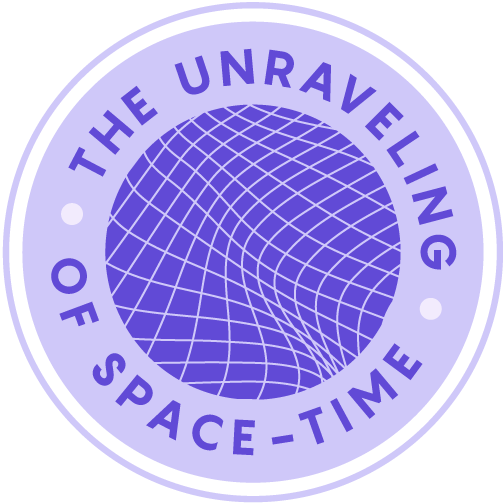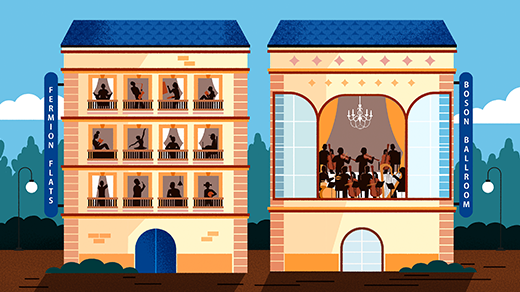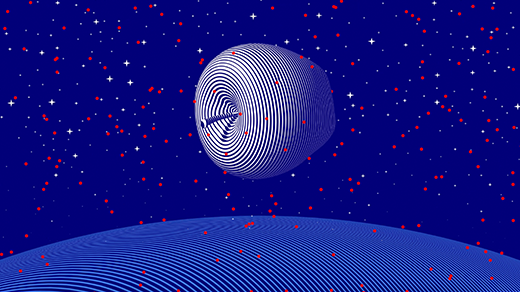The Two Faces of Space-Time
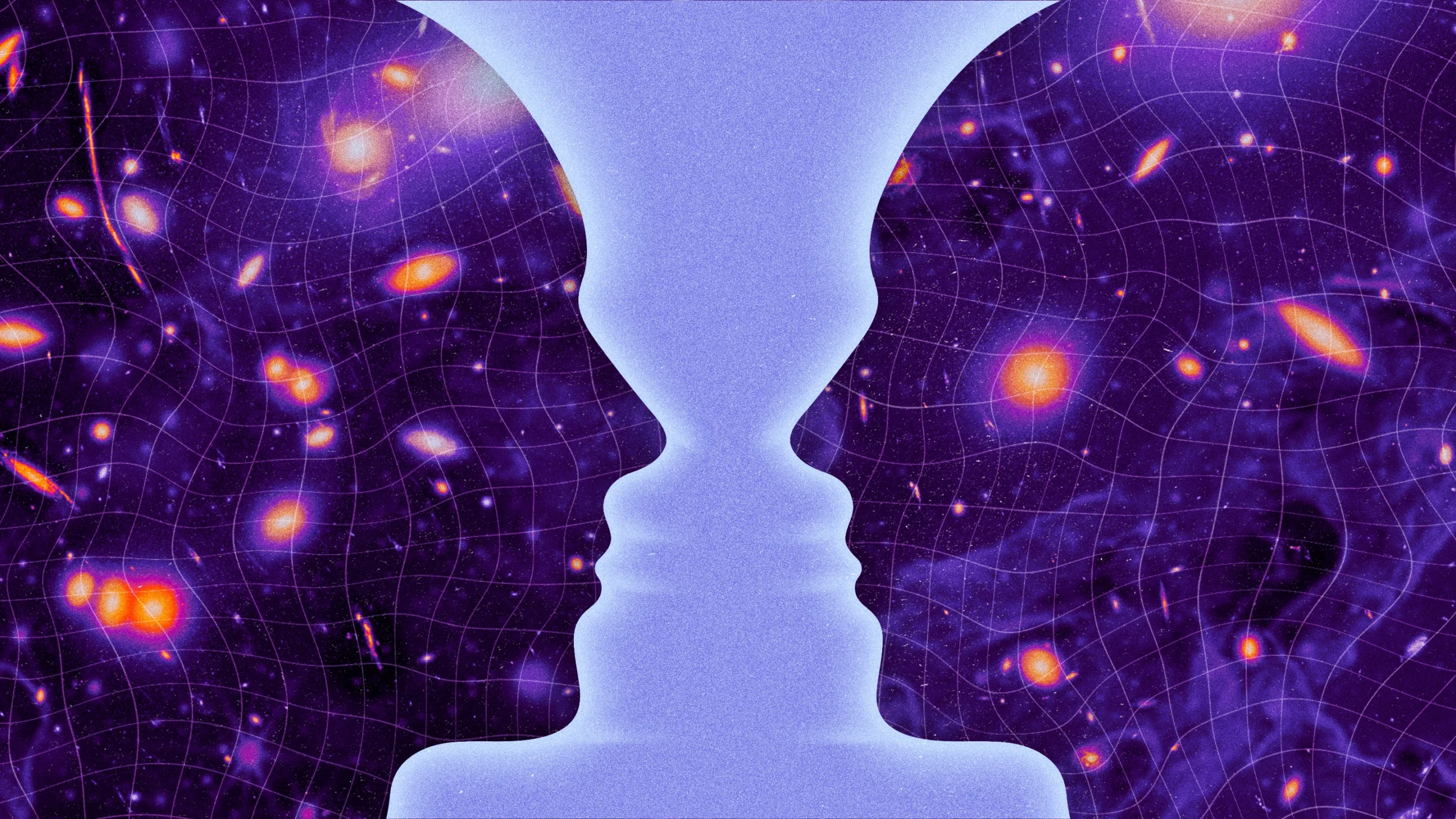
Kristina Armitage/Quanta Magazine
Anyone who has seen the classic rabbit-duck optical illusion knows the magic and confusion of duality. One might see a duck facing to the left with its bill hanging slightly open or a rabbit with its nose pointing to the right and its ears extending behind it. Both perspectives are valid.
In physics, duality is when a single physical system can be described with two completely different sets of equations. Invariably, when physicists encounter such a situation, having multiple, distinct approaches leads to a new understanding of the Janus-like system.
“[You realize] ‘Oh, now I can solve the problem, or now I have a better picture,’” said Daniel Ranard, a physicist at the California Institute of Technology.
Many of today’s physicists are grappling with a duality so surprising that it has called into question basic features of reality. It is called the AdS/CFT correspondence, and it ups the ante on the rabbit-duck illusion by equating two radically different views of an entire cosmos (albeit a toy cosmos with an exotic shape unlike that of the real universe).
In one perspective, physicists see a two-dimensional universe that is flat. In an equivalent, “dual” view, they see what they call a “bulk” universe that pops out to fill a volume, a bit like a hologram. Two sets of equations with wildly different conceptual messages end up describing exactly the same physical events.
“That is some crazy stuff,” said Adam Brown, a physicist at Stanford University. “You have a whole spatial dimension that just wasn’t there at the start.”
The AdS/CFT duality has had an enormous influence on fundamental physics this century, as physicists grapple with the nature of the space-time fabric that fills our real cosmos. They’re led to wonder: Does our universe, too, have a dual description? When do dualities arise? And how common are they?
“With AdS/CFT, there are already two helpful ways of looking at it,” said Ranard. “Could there have been more helpful ways? How do we find those different ways?”

Dictionary of Duality
To see how two theories can secretly say the same things, you need a dictionary to translate between them. The rabbit-duck dictionary, for instance, would establish that “ear” in the rabbit picture means “bill” in the duck picture.
Consider how points and lines relate to each other in geometry. Any arrangement of points and lines can be translated into a dual arrangement. The dictionary, in this case, states that “point” means “line” and vice versa. Take the true statement “Two points determine a unique line.” Swap the words “point” and “line,” and you get another true statement: “Two lines determine a unique point.” (Parallel lines are the exception, although resolving the exception by stating that parallel lines meet at an infinitely far away point led to the development of projective geometry in the 15th and 16th centuries.)
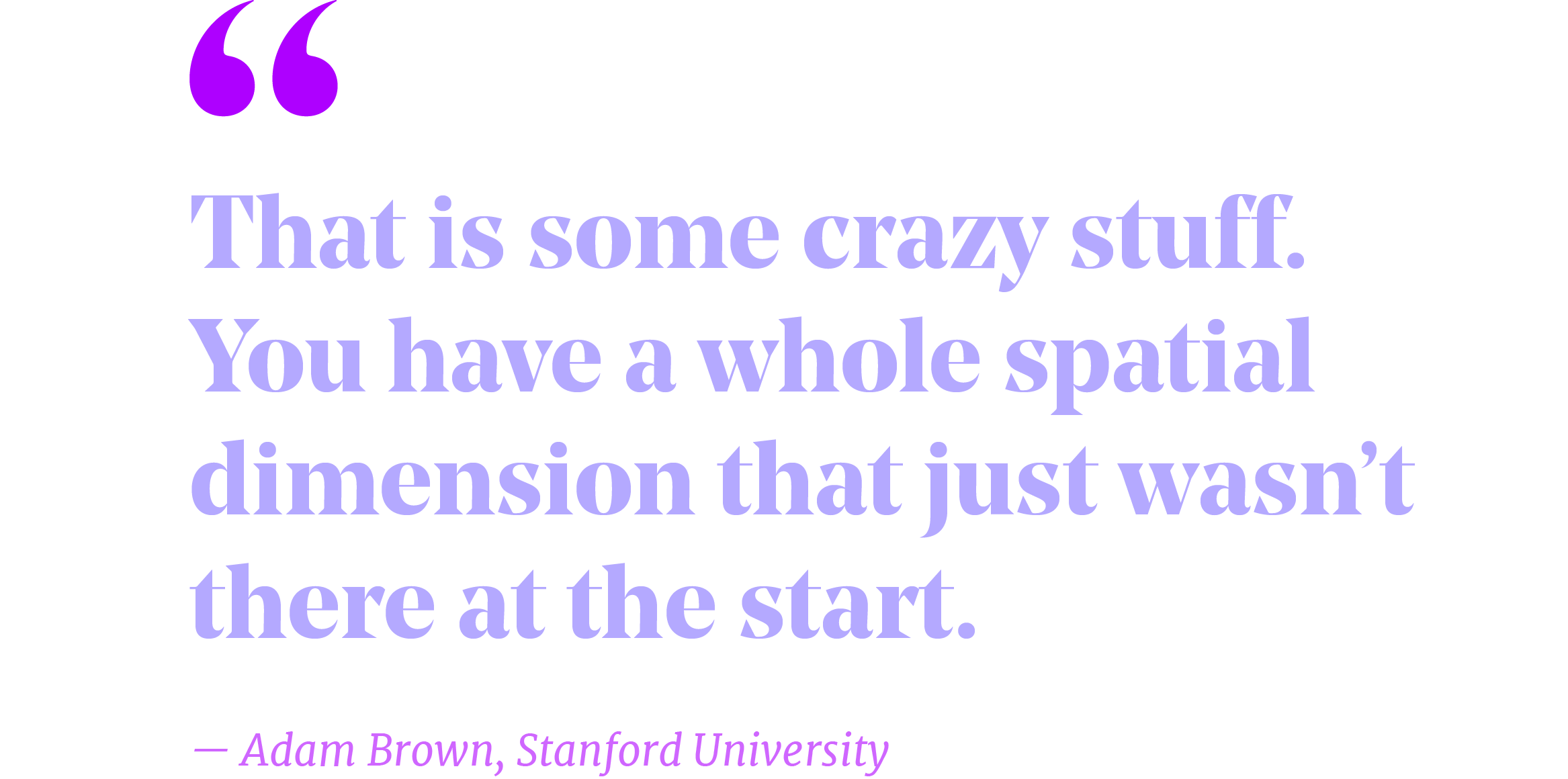
There’s a similar duality between electric and magnetic fields. A pair of simple dictionary entries specifies a way of replacing each field with one of the other type in a way that does not affect measurements you might make — such as how much energy you detect in a certain region. This duality reflects the unified nature of electromagnetism, as revealed by the Scottish physicist James Clerk Maxwell in a handful of equations in the 1800s.
“The electric field implies the existence of the magnetic field and vice versa,” said Vijay Balasubramanian, a physicist at the University of Pennsylvania.

With or Without Gravity
AdS/CFT is known as a “holographic” duality, because it makes an equivalence between a theory of a flat universe and one that describes a higher-dimensional version. What’s especially striking about AdS/CFT is that the very laws of nature appear to differ drastically between the two sides.
From the flat perspective, the universe is made up only of particles obeying a quantum theory known as a conformal field theory (that’s the CFT of AdS/CFT). From the higher-dimensional perspective, the toy universe is made of both particles and a space-time fabric that curves, producing gravity. This fabric has an exotic weave, known as anti-de Sitter (AdS) space, which has negative energy (whereas our actual universe is infused with positive energy).
Gravity exists only in the higher-dimensional bulk picture. And yet physicists have worked out many entries in a dictionary of translation that allow them to talk about this AdS/CFT universe with either language. A space-time–contorting black hole in the bulk, for instance, can be treated as a cloud of quantum particles in the flat universe. The predictions of the flat quantum theory and the bulk gravitational theory match. (You might already see what makes this duality particularly special in theoretical physics.)
“Somehow this is the same theory,” Brown said. “This is the miracle.”
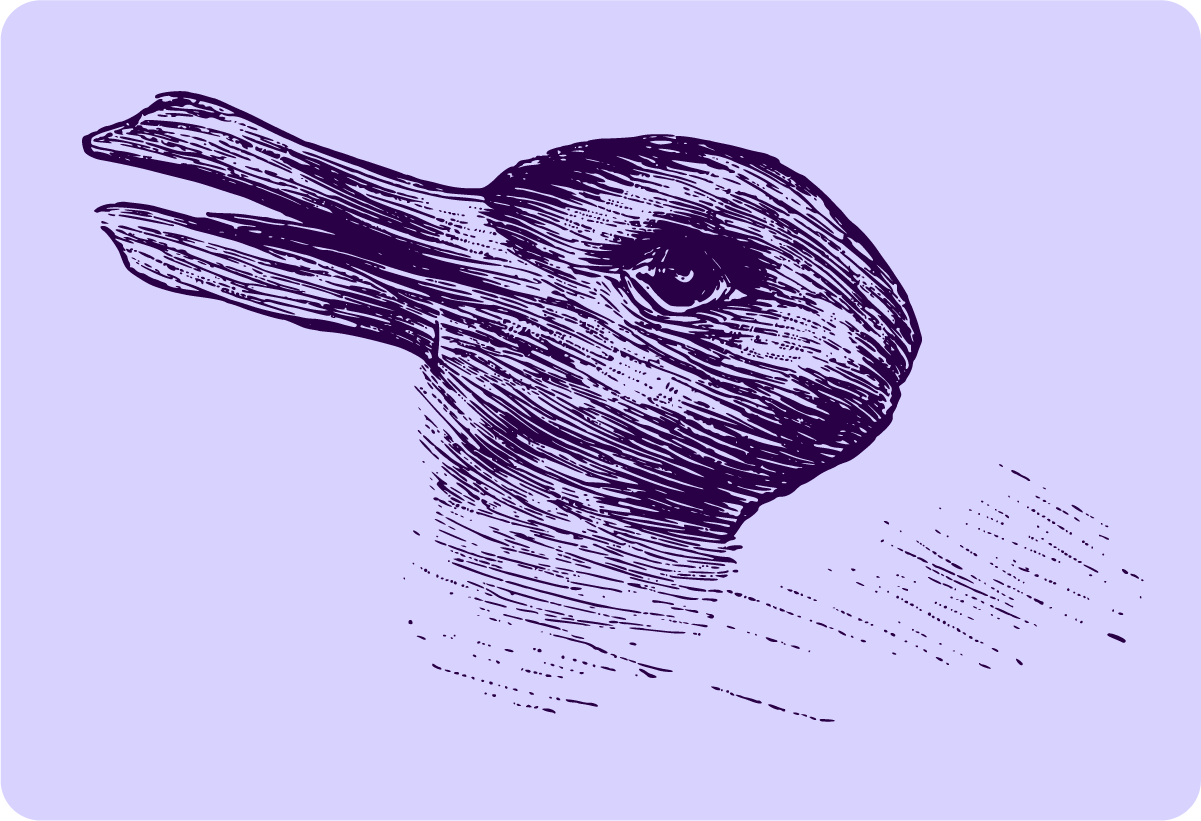
This unattributed drawing originally appeared in the German magazine Fliegende Blätter in 1892.
The miracle enables physicists to perform otherwise impossible quantum calculations — by calculating them in the other perspective and using the dictionary to translate the results back. And the equivalence has helped us understand our real universe. For example, the particles of the CFT closely resemble the real particles found in atomic nuclei. These particles pull on each other so strongly that standard mathematical techniques fail to predict what will happen when, for instance, two nuclei collide. But by using the holographic dictionary to look at the particles from their other perspective, as a gently curving space-time, physicists can calculate the outcome using Einstein’s gravity equations and then translate the answer back to get a sense of how the nuclei would smash together.
“It had a huge impact on that field,” said Thomas Faulkner, a physicist at the University of Illinois Urbana-Champaign, who started studying the AdS/CFT correspondence in this context.
Physicists have also turned the duality around and tried to resolve mysteries of gravity by working with equations on the flat side. Namely, what is the quantum form of gravity in the bulk, and how does it work? Answering that question might help clarify the nature of quantum gravity — perhaps the greatest mystery of modern physics — in the real universe, too. “The whole game of understanding quantum gravity is to figure out how all of this bulk physics, the interior of black holes, is mapped into the CFT,” said Chris Akers, a quantum gravity researcher at the University of Colorado, Boulder.
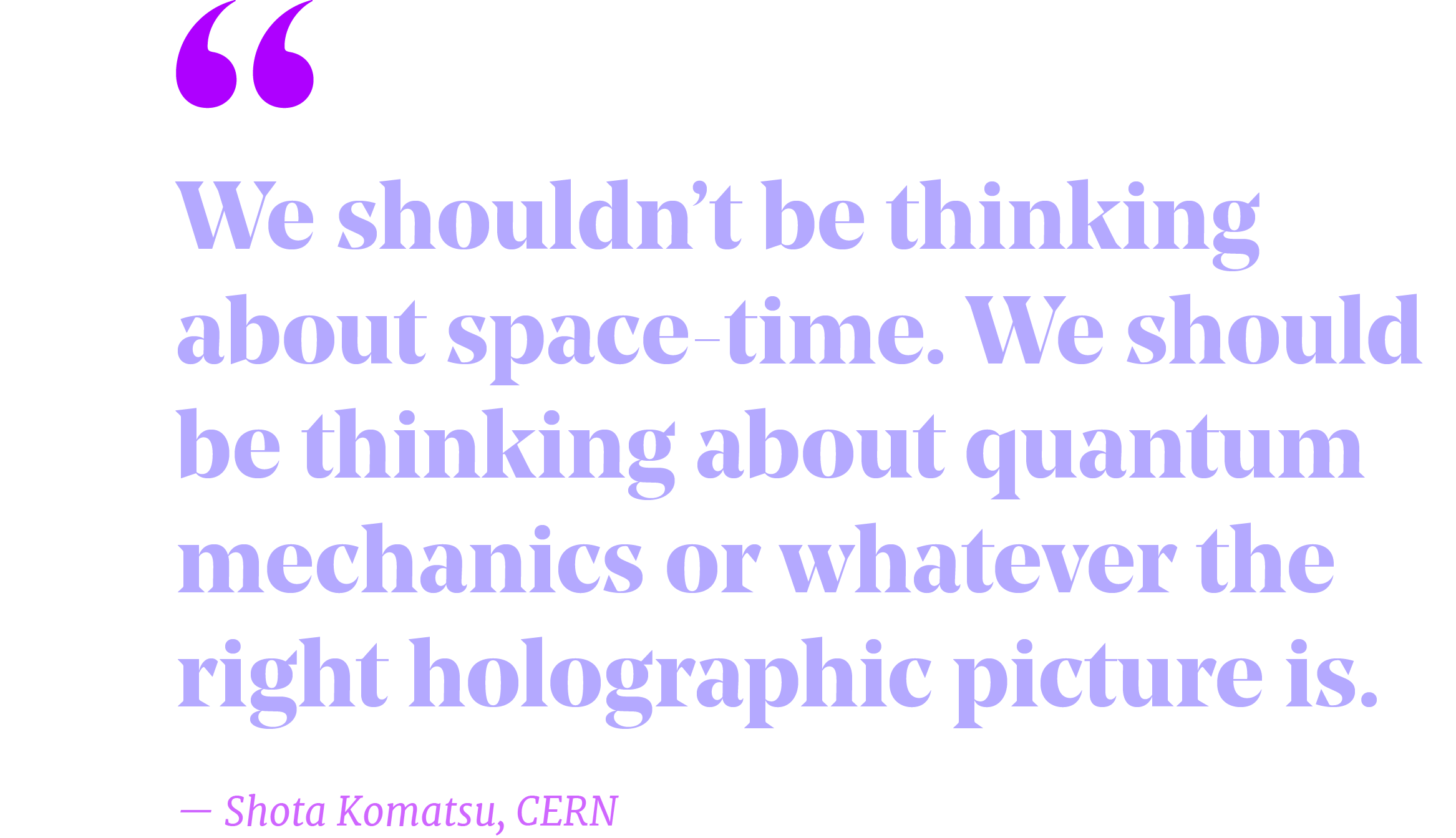
The bulk space-time is sometimes treated as if it’s “emergent” — a coarse-grained approximation that arises from the flat, CFT side. That’s because the CFT never fails to give sensible answers, whereas in the bulk, certain thought experiments involving gravity and quantum mechanics appear to lack meaningful outcomes. This apparent incompleteness of physics in the bulk could indicate that no contradiction-free theory of bulk quantum gravity exists. In this case, the bendy space-time fabric that surrounds us would be illusory, and the quantum particles on the boundary would be the real stuff of existence.
“We run into roadblocks because this is the wrong picture,” said Shota Komatsu, a theoretical physicist at CERN, the particle physics laboratory near Geneva. “We shouldn’t be thinking about space-time. We should be thinking about quantum mechanics or whatever the right holographic picture is.”
But most physicists assume that the holographic duality is exact, meaning neither side is more fundamental or approximate than the other. It’s like the rabbit-duck, where every last hair of the one animal has a counterpart feather. In that case, physicists might someday be able to work out a complete theory of quantum gravity in the bulk, thereby fully grasping both sides of the correspondence. In that world, space-time would have two faces — each contradiction free — and it would lack any one true nature. Space-time would and could be two things at once.
“Maybe in the future we will understand the bulk better,” said Juan Maldacena, a physicist at the Institute for Advanced Study who discovered the AdS/CFT correspondence in 1997. “I hope that will be the case.”

Duality Hunting
In 2016, while MIT’s Ranard was in graduate school at Stanford, a hotbed of AdS/CFT research, he and his fellow grad students Jordan Cotler and Geoff Penington set out to better understand dualities in general by systematically exploring all the possible perspectives on a simpler system.
Consider a system of two pendulums. At every moment, an observer can describe each one’s state in terms of an angle and a velocity. You can specify the state of the whole two-pendulum system with two angles and two velocities. Now imagine those four properties as the axes of a four-dimensional space encompassing all the system’s possible states — any given state of the two moving objects is represented as a single point in this space. As the pendulums swing, this point will trace out a zigzagging path through the space.
Now blind yourself to what you know about this system. Conceal the pendulums, delete the axes, and just watch the point zip around the 4D space. Is there a way to infer the two pendulums? Most random axes you could impose would mix the pendulums’ motion together in a confusing way, but the original axes — two angles, two velocities — would restore clarity. Ranard and his colleagues wondered: Was there a way to start from the abstract path and find not only the original axes but also any alternative sets of axes that made the motion comprehensible in a different way, such as bouncing springs or colliding particles? That is, could they find a dual system, and how common would such dualities be?
The physicists answered quantum versions of these questions by carrying out an exhaustive exploration of all possible zigzaggy paths through a space of quantum states and all the possible interpretations of those paths. (By chance, a key piece of algebraic geometry they needed happened to have been developed by Penington’s mother, the mathematician Frances Kirwan. Penington kept that information private until they finished the calculation. “He was like, ‘OK, now that we think we understand, we can ask my mom,’” Ranard said. Kirwan fixed a few details.)
They found that in the world of all quantum evolutions, sensible interpretations are precious gems. For almost all zigzagging paths, no matter how they broke the system into a parts, all the parts acted like they were in contact with all other parts, as if they had no separation in space. A vanishingly small number of evolutions had a “local” perspective in which each part influenced only a few others. And of the slim minority that had one local interpretation, a much smaller number had a second, dual local interpretation.
Physicists have drawn two lessons from Ranard and colleagues’ research. First, dualities like AdS/CFT, in which a system can be organized in two equivalent, local ways, are as exceptional mathematically as they seem intuitively. Moreover, in the landscape of quantum evolutions, locality itself is rare. There could have been many different axes that split a system into separated pieces, but there is generally no more than one — if one exists at all. Our natural perspective as beings with locations separated by space sticks out as a mathematical oddity.
“It’s a reminder that the laws of physics that we perceive in our world don’t seem to be random,” said Sean Carroll, a physicist at Johns Hopkins University. “They seem to be specific.”
